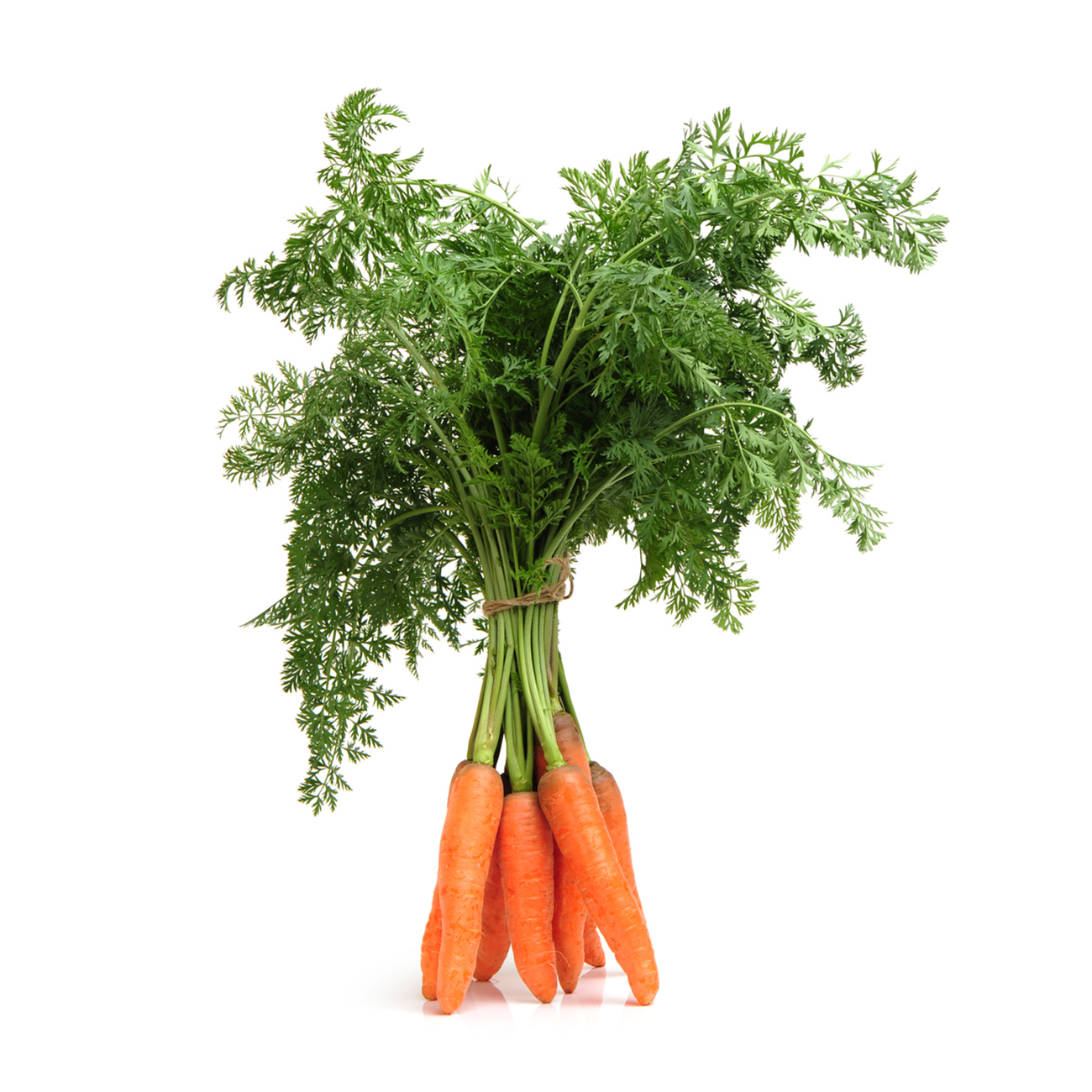Carrots, baby
The perfect size for a veggy snack.
Alternative Name
N/A
Scientific Name
Daucus carota
Health benefits
As the name indicates, baby carrots are smaler than other varieties. While sometimes they are younger and/or smaller varieties, they can also be long, thin, mature carrots that have been chopped and milled to be sold as baby carrots. They are popular in school lunchboxes, as snacks or in stir-fries.
-
Harvesting
Carrots should be firm; straight with a uniform taper from shoulder to tip; bright orange; have little or no residual hairiness from lateral roots; be without visible green shoulders from exposure to sunlight during the growth phase; have low bitterness from terpenoid compounds; have high moisture content and high reducing sugars. Quality defects include lack of firmness, non-uniform shape, roughness, poor colour, splitting or cracking, sunburn, and poor quality of tops or trimming. Bunched carrots are highly perishable due to the presence of the tops. Good quality is generally maintained for only 8–12 days. Bruising, shatter-cracks and tip-breakage are signs of rough handling.Postharvest storage temperature
Carrots should be stored at 0°C to prevent decay, sprouting and wilting. Freezing injury will likely result at temperatures of -1.2°C or lower. Frozen carrots generally exhibit an outer ring of water-soaked tissue, viewed in cross section, which blackens in 2-3 days. Sprouting will result in wilting, shrivelling, or rubberiness of the carrot tissue due to dessication.Controlled atmosphere storage
Controlled atmosphere is of limited use for carrots and does not extend postharvest life of carrots beyond that in air. CO2 concentrations above 5% have been shown to increase spoilage. Low oxygen concentrations, below 3%, generally results in increased bacterial rot.Ethylene sensitivity
Exposure to ethylene induces the development of a bitter flavor due to the formation of isocoumarin. Exposure to as little as 0.5ppm exogenous ethylene will result in perceptible bitter flavour. Thus, carrots should not be mixed with ethylene-producing commodities.Humidity storage
High relative humidity (98–100%) is essential to prevent dessication and loss of crispness. Free moisture from the washing process or unevaporated condensation, common with plastic bin-liners (and due to fluctuating temperatures) will promote decay. White blush, due to dehydration of cut or abrasion-peeled surfaces, has been a problem on fresh-cut carrots. Sharp cutting blades and residual free moisture on the surface of the processed carrots will significantly delay the development of the disorder.Disease & infection
The most prominent postharvest disease concerns for carrots are grey mould, watery rot, relative Rhizopus rot, bacterial soft rot, induced by Erwinia carotovora subsp. carotovora and sour rot. Proper handling, low temperature storage and transportation conditions are the best methods to minimise losses. -
Peel or trim greens before use. Place in water container and keep in fridge.

You might also like
Veggy tip
If carrots are cooked whole and then cut up, they are noticeably sweeter than when cut up first because less sugars are lost during the process.



